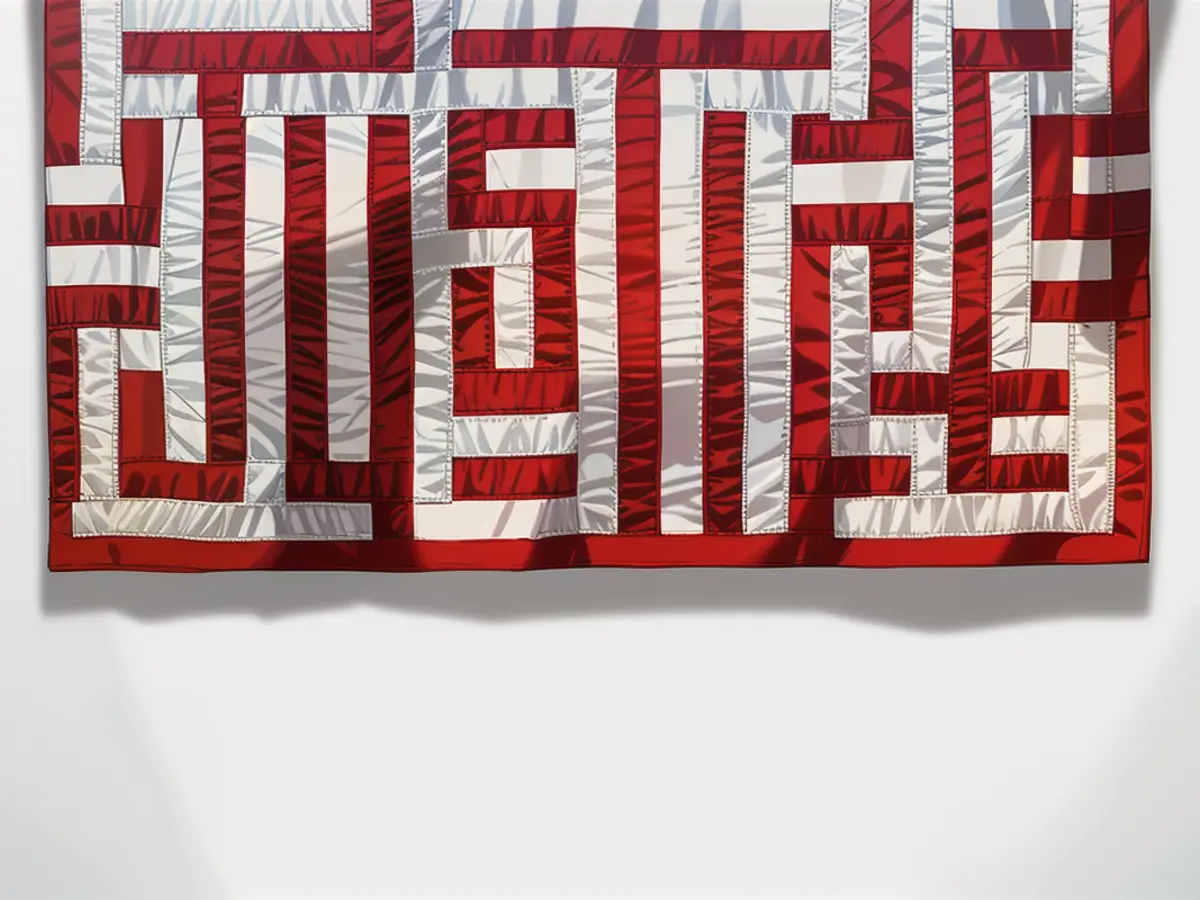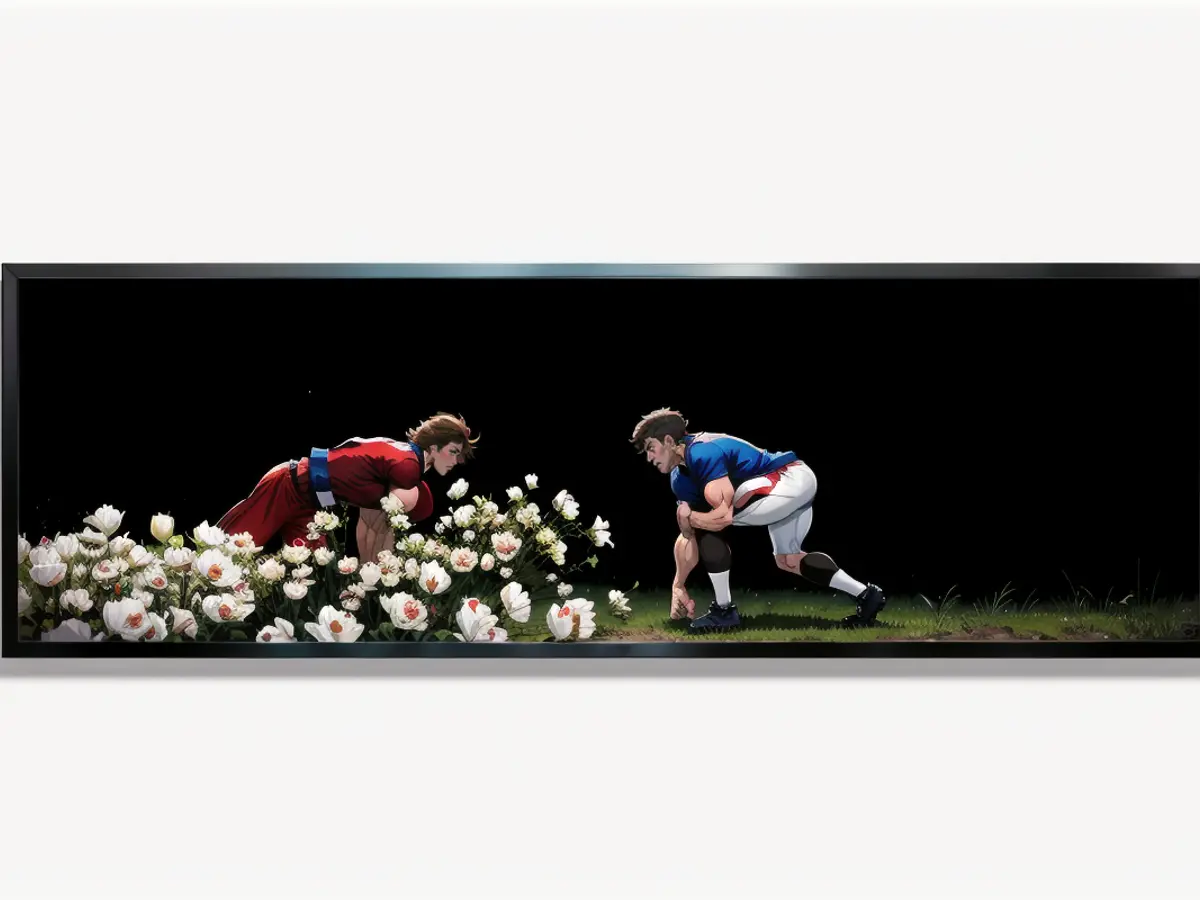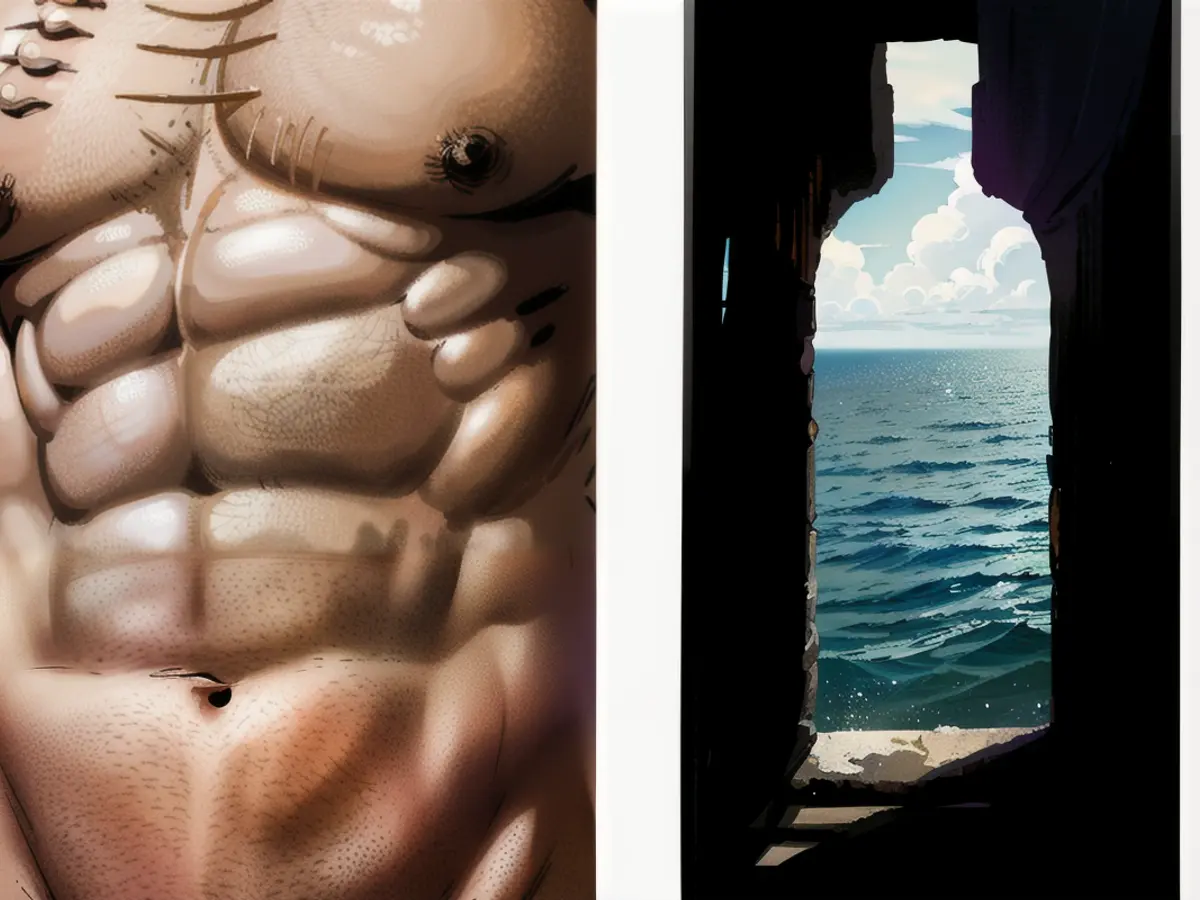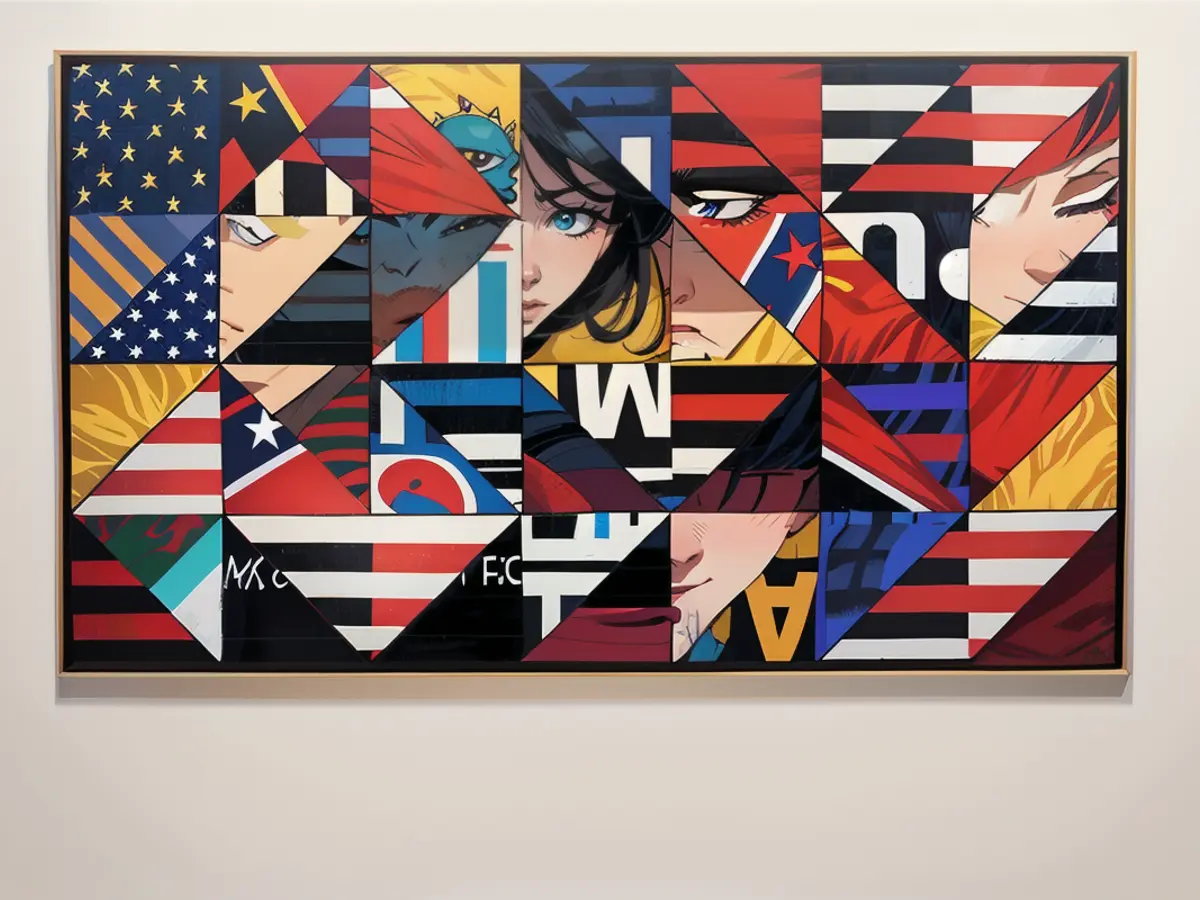An artist confronts the hazardous influence of promotions and symbolism.
A woman is dangling from a mountain peak by a rope in an advertisement.
"Any guesses on what this is promoting?" a man asks a group of people attending the opening of his new exhibition, "LOVERULES." "Sweaters?" someone suggests. And they're right.
This image comes from Thomas' extensive portfolio, "Unbranded: A Century of White Women," which spans 101 print advertisements, each spanning a year. For this exhibit, Thomas has removed logos and captions, leaving viewers to contemplate ever-evolving notions of femininity and its commercialization. This particular ad, promoting Drummond Sweaters, was published in 1959 in Esquire magazine. Hearing the text, many in the gallery scoff: "Men are better than women! Indoors, women are useful - even pleasant. On a mountain, they're a drag."

"LOVERULES" weaves together Thomas' key practices and motifs, such as corporate branding, gender and racial construction, and power conflicts within movements for equality. About the show, Thomas discussed with CNN, "What is it like to revisit an object designed to have a three to six-month lifespan, 40 years later? "
In this exhibit, viewers experience discomfort or even outrage when viewing an advertising image of a woman with mascara trailing down her face, which resembles a black eye, or another woman stripped completely naked, surrounded by a group of men. The former is from a 1963 Tareyton cigarette ad, seemingly trivializing domestic abuse through its call for "aggressive loyalty"; the latter, featuring men positioning themselves to sexually assault a woman, was made for pants.

"Unbranded" exposes values instilled in advertising, specifically capitalism and the manner in which marginalized groups are commodified for profit. "Advertising tells us what's expected of us," Thomas commented to CNN. "These messages are designed to sell products."
Over the past 20+ years, Thomas has gained recognition for addressing race, gender, class, and their intersections in American society through various mediums, ranging from photography to fabric. From mirroring a football player's three-point stance with an enslaved person picking cotton in "The Cotton Bowl" to creating a maze constructed of prison uniforms and American flag fabric in "Justice", he successfully pinpoints the foundations of oppression and encourages examination of these systems.

His companion series, "Unbranded: Reflections in Black by Corporate America," critiques corporate appropriation of Black culture. "Around the late '60s, corporations started to take notice," he shared of this project which examines ads from 1968 to 2008 (and concludes with Barack Obama's election). "Previously, Black communities were not perceived as a valuable audience to market to, or represent."
Thomas' examination of advertisements as a tool for understanding systemic racism and sexism in American history calls attention to the ways companies market ideas for profit. "This process has become more subtle, more cloaked," he explained. "Nowadays, we're digesting advertising information without even realizing it."

Even when we're fully aware of brands' manipulative strategies, that doesn't prevent us from participating in them. In his series "B®anded," part of which is showcased in "LOVERULES," Thomas combines altered images and brand logos to reveal how we are bound to—and even compelled by—corporations: a modified Amex featuring a slave ship, highlighting "The Afro-American Express" and "how slaves were branded as a form of ownership."
Two of Thomas' creations also showcase the iconic Absolut bottle shape, one of which resembles the Door of No Return on Gorée Island in Senegal. This door symbolizes the entrance to the biggest storage warehouse for enslaved Africans before they were sent to ships overseas. These innovative advertisements, considered by Thomas as "messages from the future," epitomize the cultural and societal tendencies of their era. The question that arises is, which contemporary visual representations might spark discussion and criticism in four decades?
Read also:
- Caught up in the present: the end of "The Crown"
- Through New Year's Eve with TV shows
- What's next for the series hits?
- Which shows will be on?
In the ongoing discussion about Thomas' exhibition, "LOVERULES," a viewer might comment, "This exhibition really highlights how the arts and fashion industries have shaped our perceptions of gender and femininity over the years." Or, an art critic could note, "Thomas' work demonstrates how style and symbolism in advertising have significantly influenced societal norms and expectations, especially in relation to gender."
Source: edition.cnn.com








